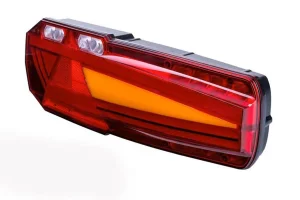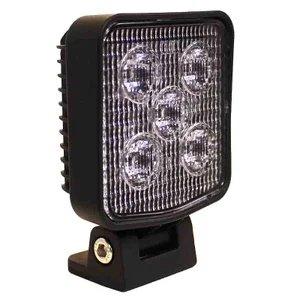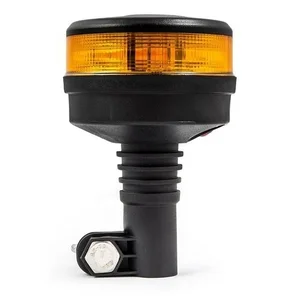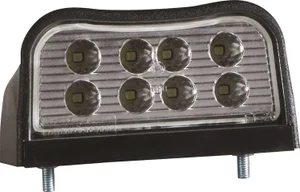When you want to drive your tractor or other agricultural vehicle on the road, there are of course different rules. You can probably imagine that the rules are different compared to other vehicles such as cars or trucks. But what exactly do you need to take into account can sometimes be unclear. How fast can you drive a tractor? Which driving licence do you need for a tractor? This is not a B licence, but which licence do you need for a tractor? Where is a tractor allowed to drive and where not? Where a tractor can drive depends on several factors. And what kind of lighting should it have? The answers to all these questions can be found below.
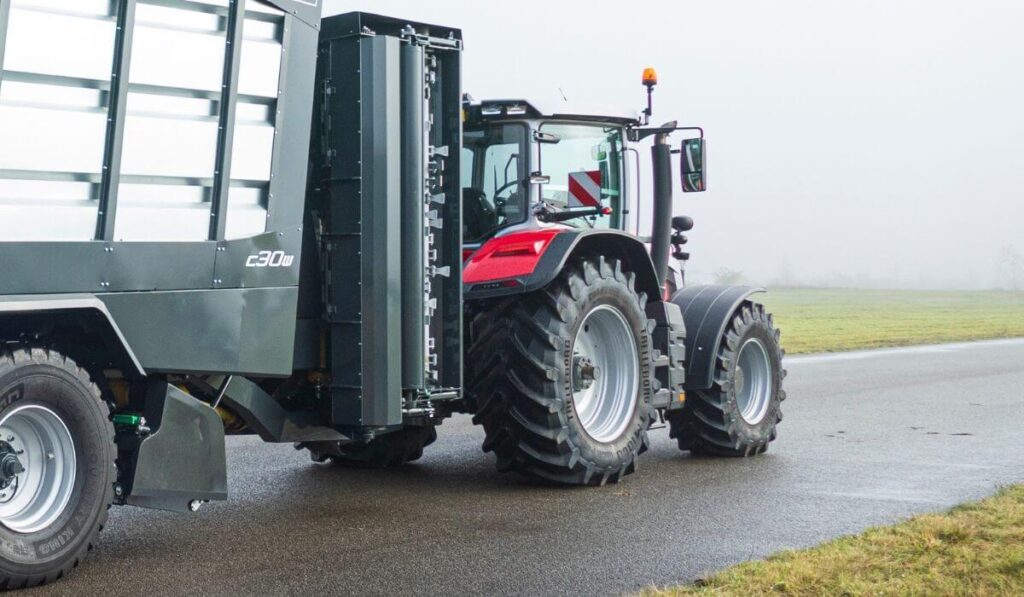
Which vehicles fall under agricultural vehicles?
To know what you need to consider, it is important first to understand the category to which tractors belong. Tractors fall under the so-called agricultural vehicles. This category includes various vehicles, including tractors. Additionally, it includes agricultural trailers, interchangeable towed equipment, and motor vehicles with limited speed. Motor vehicles with limited speed are abbreviated as MMBS. This category was replaced with the term "mobile machines" as of January 1, 2021. Vehicles that were already on the market before this date can still be classified in the MMBS category.
Where is a tractor allowed to drive?
An agricultural vehicle is not allowed to drive on every road in traffic. This is because the vehicle is simply not as fast as the other traffic. On some roads, this can lead to dangerous situations. There are only a few roads where agricultural vehicles are not allowed. On the vast majority of roads you are allowed to drive your tractor. You are only not allowed to drive on motorways and motorways. There are also exceptions for roads with a closed declaration for agricultural vehicles with limited speed. If this is the case, it is indicated by a traffic sign. This is a white round sign with a red border around it. In the middle is a picture of the vehicle that is not allowed to use the road. It may be that only a tractor is depicted but it may also be in combination with other vehicles such as mopeds.
How fast can a tractor go?
Earlier, it has been mentioned that a tractor is not allowed on every road since it is not as fast as other vehicles. But on the other roads there is also a speed limit for a tractor. These speeds are also adjusted from time to time. Previously, there was always a maximum speed of 25 kilometres per hour. Since 1 January 2021, there are new rules regarding how fast a tractor can go. Since 2021, you are allowed to drive 40 kilometres per hour. What is important is that this only applies if your tractor has a registration number.
In addition to the maximum speed, there are also requirements relating to braking capacity. It is important that a large vehicle like a tractor can stop in time. To make this clear, it is first useful to know what the concept of construction speed means. The construction speed is the maximum speed for which a vehicle is made. It is important to know how fast a tractor can go. This is because all parts of the vehicle, including the brakes, are adjusted accordingly.
The requirements for the braking performance are as follows: At construction speeds of 30-40 km/h this is at least 3.1 m/s2, above these construction speeds 4.5 m/s2. This means that the permitted stopping distance (the sum of the "reaction distance" and the braking distance) of the agricultural vehicle at speeds of 25 km/h is about 15 m and at 40 km/h about 30 m. The strange thing is that this is not entirely in accordance with the law. The stopping distance is then 30 to 50 % longer compared to a passenger car. The law states that, in principle, this should be the same.
Which tractor driving licence?
Nowadays, you need a special driving licence for driving a tractor, namely the 'T driving licence'. Before 1 July 2015 this was not the case and it was automatically added. At that time, a "normal" B driving licence already allowed you to sit behind the wheel of a tractor. If you obtained your driving licence before 1 July 2015, you do not need to obtain a special T driving licence. It will be added automatically when you renew your driving licence. The T and B driving licences also apply in other countries within the European Union. When driving on private property, you may drive the vehicle without a driving licence.
Before the introduction of the T-driving licence, people of 16 or 17 years of age were also allowed to drive a tractor. At that time, it did not matter what driving licence you had, but you had to have the so-called 'certificate of aptitude' to drive a tractor. People who had this certificate had one year to change it to a T licence. If you did not do this in time, you will still have to obtain the T licence separately.

Is a tractor subject to registration?
For a long time, it was not necessary to provide your tractor with a registration number. Because of this, it was always impossible to give an agricultural vehicle a fine when it did not comply with the rules. Partly because of this, since 1 January 2021 it has been compulsory to have a registration number on your agricultural vehicle when you want to drive on public roads. If you only use the vehicle on your own property, a licence plate is not necessary. To be able to provide your tractor with a registration number, the vehicle must first be inspected. This would not have been necessary if the registration had been requested before 31 December 2021. For more information about the registration requirement for agricultural vehicles, I refer you to our blog called: Registration requirement for tractors and other agricultural vehicles. In summary, having a licence plate largely determines where you can drive a tractor everywhere.
Which lighting is compulsory?
Different lighting is required for every vehicle on the public highway. Visibility in traffic is very important. In the dark, a vehicle must be clearly visible to prevent accidents. As with other vehicles, a tractor must be fitted with basic lighting. This consists of:
Dipped-beam headlamps
Dipped-beam headlamps at the front: They serve two purposes. Firstly, they are intended so that you yourself, the driver, can see something. Secondly, they are also important because your vehicle is more visible to other vehicles. An important point here is that they must be properly adjusted. When you adjust your dipped headlights incorrectly, this can have a blinding effect on other road users. This can be very dangerous.
Driving lights
Another lighting system that is also compulsory is city lights on the mudguards. Many people think that parking lights are the same as daytime running lights but this is not the case. The purpose of parking lights is to ensure that a vehicle is clearly visible when parked. That is why the lights are also called parking lights. The lights do not contribute to the visibility of the driver of the vehicle. However, it does help you to be seen better when you are parked alongside the road.
Direction indicators
Direction indicators are, of course, also compulsory for agricultural vehicles. By using direction indicators, you make it clear to other road users which direction you are going in. When you use them, other users will be able to anticipate on you when it comes to right of way and things like that.
Rear lights
Of course, a tractor is also required to have rear lights when driving in the dark. Rear lights ensure that vehicles approaching you from behind can see you clearly. This is especially essential for agricultural vehicles, which are generally slower. TRALERT® offers a range of different types of LED tail lights for tractors.
Brake light
Along with the taillight, of course, comes the brake light. When people are driving behind you, especially in the case of the slower agricultural vehicle, it is important to be able to see whether braking is occurring or not. This allows the driver behind the vehicle to react. You can imagine what would happen if there were no brake lights.
License plate light now also available for the tractor
Of course, a tractor is also required to have rear lights when driving in the dark. Rear lights ensure that vehicles approaching you from behind can see you clearly. This is especially essential for agricultural vehicles, which are generally slower. TRALERT® offers a range of different types of LED tail lights for tractors.

Beacons not for every tractor
It may be mandatory to use beacon lights on public roads, depending on the width of the vehicle. If your tractor is wider than 2 meters 60 centimeters, it's required to use beacon lights. Also, when a wide vehicle is working alongside the road, a beacon light must be used. It should be colored orange, also known as amber, to avoid confusion with other types of vehicles, such as the blue color used for police, fire, or ambulance vehicles. Within TRALERT®'s range, you can find various LED signaling devices for your tractor, ranging from beacons to flashers.
Reflectors
Reflectors are also very important on an agricultural vehicle. A reflector does not emit light itself, but it reflects it so that you are still visible. A reflector will never improve visibility as much as lighting, but it certainly helps. A tractor must have two or four red reflectors at the rear of the vehicle. Please note that these may not be triangular reflectors. This is because it is a motorised vehicle. However, it must be fitted with a so-called truncated triangle reflector. This is a triangle without sharp points. It looks like the ends have been cut off. This is meant for slower vehicles.

Additional lighting
In addition to the mandatory lighting, it's also possible to equip your tractor with extra lighting. For instance, low beams are required, but high beams can be very useful in the dark. Each type of lighting has its advantages in different situations. TRALERT® offers additional lighting options in its range to equip your tractor, such as tractor LED work lamps or tractor LED light bars. However, keep in mind that this lighting may not always be used while driving, as it can be so bright that it may dazzle other road users. You can also add extra LED marker lights to your tractor.
Additional lighting
As of 1 January 2021, the rules regarding the dimensions and weight of a tractor have changed in addition to the registration requirement. Among other things, the maximum length of an agricultural vehicle has been adjusted. These are now allowed to be twenty metres long. As of 1 January 2022, trailers may only be 2.55 metres wide over the body. Trailers that were put into use before that date will be approved. The maximum width over the tyres remains three metres. A combination with a trailer may not be longer than 18.75 metres.
When it comes to weight, the rules have not changed. The maximum mass of a limited-speed motor vehicle is 60,000 kilograms. The maximum axle load is still 12,000 kilograms. However, there is a rule that may reduce the maximum mass. When an agricultural vehicle is equipped with a overrun brake, the maximum weight is 8,000 kilograms. This is in order to comply with the European directives.
The load on a tractor can sometimes consist of sharp components. If this is the case, the load must be properly protected so that no damage or physical injury can occur. The law states that mobile work equipment used by people to move about, including tractors, must be equipped to minimise the risk to anyone.
When one or more rules regarding the weight, size or load cannot be met, you cannot simply drive on the road. If this is the case, you will have to apply for an official exemption. You can apply for this at the road authority.
Difference between public road and private property
It has already been mentioned that not all rules apply when driving on private property. First of all, there is no registration requirement. If you only use your tractor on your own property, it is not necessary to provide it with a registration number. Please note, however, that when you move from one pasture to another, you only have to cross the road to find yourself on public roads. In those cases, it is officially compulsory to have it. Also, the rules for which tractor driving licence is required do not apply on private property. Where you can drive a tractor without a licence therefore depends on the location. Of course, it is important that not everyone gets behind the wheel like that. This is your own responsibility.
The choice of TRALERT®
Als u op zoek bent naar verlichting voor de Tractor, dan heeft TRALERT® een ruim assortiment. De set omvat achterlichten, markeringslichten, kentekenverlichting en breedtelampen, waardoor u niet alleen veilig de weg op kunt, maar ook stijlvol met onze zorgvuldige keuze.
Better Light Work Safer!

